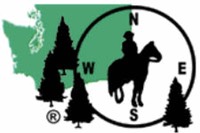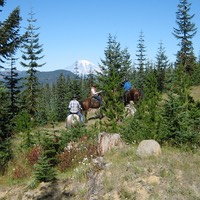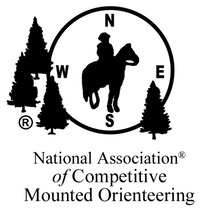The letters C.M.O. stand for Competitive Mounted Orienteering.
C.M.O. is “competitive” because you compete, as an individual or a team, against other riders to find all of the hidden objective stations. This is a timed event and you compete for a placing for that ride. The points you and your horse earn add up towards year-end placing and lifetime points with the National Association of Competitive Mounted Orienteering (N.A.C.M.O.) and your State organization.
The “mounted” part of the name is because the game is played on horseback. In theory, you shouldn’t have to ever get off the horse as each objective station should be visible from horseback.
And, finally, “orienteering” because you must be able to orient your self on a provided map and find your way around the course. The use of a map and compass, navigating your way around the designated course, identifying landmarks and finding the objective stations is what orienteering is all about.
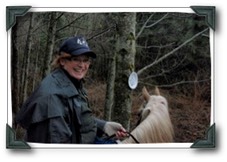
What C.M.O. is NOT, is an endurance or competitive riding race. In those sports, you follow a set course for a set distance and try to make the best time of all the competitors while getting a good “health” reading for your horse.
In C.M.O. you use your map to pick your route to find all the objective stations following whatever route you think is best to get around the course. Ingenuity, strategy and creativity are all useful.
Like endurance or competitive riding, however, the longer courses can cover many miles over all types of terrain. Common sense says you should have your horse in good shape and conditioned if you plan on riding long distances.
WHO CAN PARTICIPATE IN A C.M.O.?
Anyone can participate. Children under eighteen need to be accompanied or have signed permission by a parent or guardian. Families are welcome to ride as a group and some rides offer group discounts or discounts to teams with junior members.
All equines are welcome but must be at least three years old to participate.
WHAT DO YOU NEED TO RIDE A C.M.O.?
First you need a horse. It is, after all, a mounted sport. Any type of equine is allowed. Mules, ponies, show horses, horses off the track and backyard pets are welcome. Your horse must be at least three years old to compete.
You will also need a compass, small writing pad and pencil.
Other suggested items would be weather appropriate clothing, water, first aid supplies, lunch, and horse water and feed. Not all areas where rides are sponsored have potable water or water for your horse.
HOW TO USE A COMPASS FOR C.M.O.
If you don’t have a compass for your first ride, most Ride Managers have a few to loan to new riders.
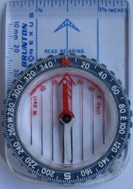
This is a map reading compass. It can be laid on top of a map to determine the direction of an area or location. In Competitive Mounted Orienteering, the numbers on the dial and the arrows of the compass are used to take the readings from each landmark helping to locate each station.
Hold the compass in the flat of your hand (away from your watch, metal saddle horn or other metal objects). Turn the dial until the number you want lines up with the arrow pointing toward the end of the compass (shown here above the “N”).
Example: At objective #1, one of the readings was 260 from the sign post. Ride up to the sign post and turn the dial of the compass until 260 lines up with the line above the arrow above the dial. Then since this reading is a “from” you turn the entire compass (or turn yourself or your horse) until the red end of the needle lines up with the red lines on the face of the compass that point toward the arrow.
Once the red needle is inside the red lines drawn on the compass face, the arrow should be pointing towards the hidden objective.
If your reading is a “to” you then turn your entire compass (or yourself or your horse) until the white end of the needle lines up with the arrow.
There is usually a six-hour time limit; sometimes this is extended at the discretion of the ride manager depending on the distance and terrain. Most rides average two to four hours.
Now that you know a little more about this game….come out and play!
